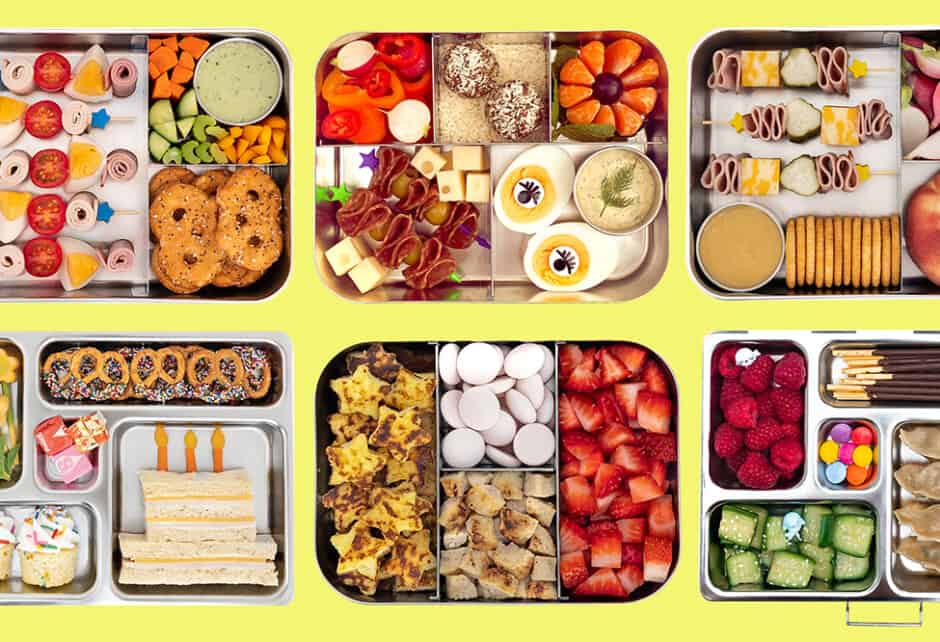
Sugar And Our Kids’ Bodies
Written by KATE MACLEAN
Photography by Jana Blankenship, Photographed By Heather Moore
Disclaimer: In the writing of the following piece on sugar, the author consumed not one, but two, pieces of bumbleberry crumble pie. They were delicious, and she doesn’t regret for a moment their incalculable grams of sugar.
The American Heart Association recommends that children under 18 consume no more than 25 grams of sugar a day. For a visual, that’s about six teaspoons. There is a paucity of research to tell us how much sugar a child is, on average, actually consuming a day, but a quick Nutrition Fact search can give us an idea: there are 39 grams of sugar in one 12-ounce can of Coca Cola; 32 grams in the same size of Canada Dry’s ginger ale, 56 grams in one 32-ounce bottle of Gatorade. In short, kids can drastically exceed their recommended limits of sugar in just one drink.
Technically, sugar isn’t recommended by the AHA or the USDA or anyone other than sugar lobbyists. Instead, our government uses wording like “try not to exceed”. Sugar is the bottom of the barrel of caloric intake. It contributes absolutely no nutritional value, merely empty calories. The USDA even wrote a blog post attesting to its potentially addicting traits. Yet, sugar is omnipresent in the American diet. By one study’s estimates, added sugar is found in over 75% of all processed food. Sugar is cheap to produce, and it is in the interest of the producers to add a substance that has their customers coming back for more.
Only in recent decades have parents—and governments, and health officials—started to understand the consequences to this unmitigated sugary heaven that has befallen our national table. Any parent can attest to the immediate effects of sugar: the high and then the inevitable low. But, there are more serious effects, too: obesity, heart disease, and type II diabetes.
While eating your cereal and staring at the cereal box (is this something people still do in the age of anti-boredom smartphones?) you may twirl around to the Nutrition Facts. While there, take a long look at the Percent Daily Value column and notice what might be missing. If you aren’t eating cereal, here is a snapshot of the Cinnamon Toast Crunch cereal box. Notice there is no Daily Value for the 10 grams of sugar found in this cereal. Not even 8 a.m. and the child eating this bowl has already consumed 40% of his recommended sugar limit. And, that is if his parents measured out the paltry three-fourths cup serving that constitutes the 10 grams of sugar. The official story on this omission is that there is no recommended daily amount of sugar, so there is no percentage to include. A recent documentary from Katie Couric (which is well worth the watch, and is available on Amazon Video) contends that the sugar lobby has pushed, for decades, to omit this information.
Encouragingly, the FDA has announced a revamping to the Nutrional Facts that will supply the Percent Daily Value for added sugars (and among other things include more realistic serving sizes). The new labels launch in 2020, which will do a lot to educating the public about their own diets. The sugar lobby, meanwhile, is barely restrained in their predictable fury.
While we wait for 2020, it’s important to first understand what added sugar precisely is, and how our body handles it differently than say, an apple. Added sugar is the non-naturally occurring sugar in the offered food. For example, an apple has about 19 grams of naturally occurring sugars. A caramel frappuccino has 60 grams of added sugar in one serving. That sugar does not naturally occur in coffee. The naturally occurring sugar in an apple can be easily handled by our body because it is piggybacking on all of the fruit’s fiber. Thus, the sugar is slowly, and much more easily digested. Our body is relaxed in the process. There is no sugar spike and crash. There is no stress on our liver. When we drink the frappuccino, the sugar, without its fiber babysitter, goes directly into our bloodstream and sends our liver and insulin levels into panic mode, trying to metabolize it as fast as possible. It is an exhausting and stressful process for the body.
The sugar industry would have you believe, “The fact is that the preponderance of science and the data on caloric sweeteners do not support a suggested limit on sugars intake.” No limit would imply no resulting problems in a high-sugar diet. Sadly, the scholarly evidence—and the trends in population and health—suggest otherwise.
A high-sugar diet has both immediate and longterm effects on children. The first immediate effect is the sugar high we all love and the crash that we all fear. The second is on your taste buds. Studies have shown that a high-sugar diet gradually dulls the taste buds, forcing the mouth’s child to search out sweeter and sweeter foods. Eventually, the child’s diet becomes severely limited and ever-dwindling in real nutrition.
The downward spiral of nutrition can bring children into more serious danger of heart disease, obesity, and type II diabetes. Heart disease is now the leading cause of death in men and women in the U.S. In 2010 obesity became worldwide more of a problem than undernourishment; 43 million children under five were diagnosed as ‘overweight’. In the U.S., the obesity rate among children 6-19 years old is one in five. Type II diabetes (known 20 years ago as adult-onset diabetes) is now climbing in children, and recent data has found that the disease presents more aggressively and less responsive to treatment than in adults.
While all of this is sure to kill your sugar buzz, there are encouraging studies of redemption. One such trial took obese kids on a drastically lowered sugar diet for 10 days, and saw incredible and immediate results of lower blood pressure and cholesterol. The science seems pretty damning; sugar is the culprit.
Parents can easily take steps to lower their child’s sugar intake at home. We put together a few tips on how to best defend yourself against the endless sugar parade.
1. Familiarize yourself with the many disguises of sugar.
There are 56 (!!) different names for added sugar on Nutrition Facts. Get in the habit of scanning the ingredients of your go-to grocery items for these little hiding crystals. Take note of the number of grams of sugar. Remember, you are aiming for no more than six teaspoons of sugar per day for your young child. One teaspoon equals about four grams of sugar.
2. Stick to the perimeter of the grocery store.
Take a tip from food guru Michael Pollan, and shop the periphery of the store. That is where you will find the veggies, meat, and dairy. This is the section with the least adulterated food, where you can find naturally occurring sugars and unprocessed items.
3. Cut down on sugar options for the kids at home.
Stock the house with apples, oranges, bananas, raw nuts, avocados. They can have as much (fresh) fruit as they desire. If they can’t drive, there’s not a lot they can do about the new offerings. While you may find the first few days are awful, and you may wonder if you have a tiny addict in your home, take comfort in knowing the first week is the worst. After 10 days, their tastebuds will actually start to heal and their cravings will subside. Bonus: you’ll find that fresh fruit is often much less expensive than processed sugar, and you’re getting so much more nutrition for your kiddos.
4. Pack their lunch.
This is the best way to ensure they are getting a healthy variety. Be thoughtful in your approach, check to see if you have inadvertently added hidden sugars to the meal.
5. Allow for treats.
You don’t need to banish sugar from your home. Be mindful to have special times for special treats, but your nightly supper should not necessitate a nightly dessert.
6. Follow an expert’s advice.
We interviewed child nutritionist Jill Castle last year, and she had some great pro-tips for getting sugar out of the house. It might be worth a re-read.
Share this story




